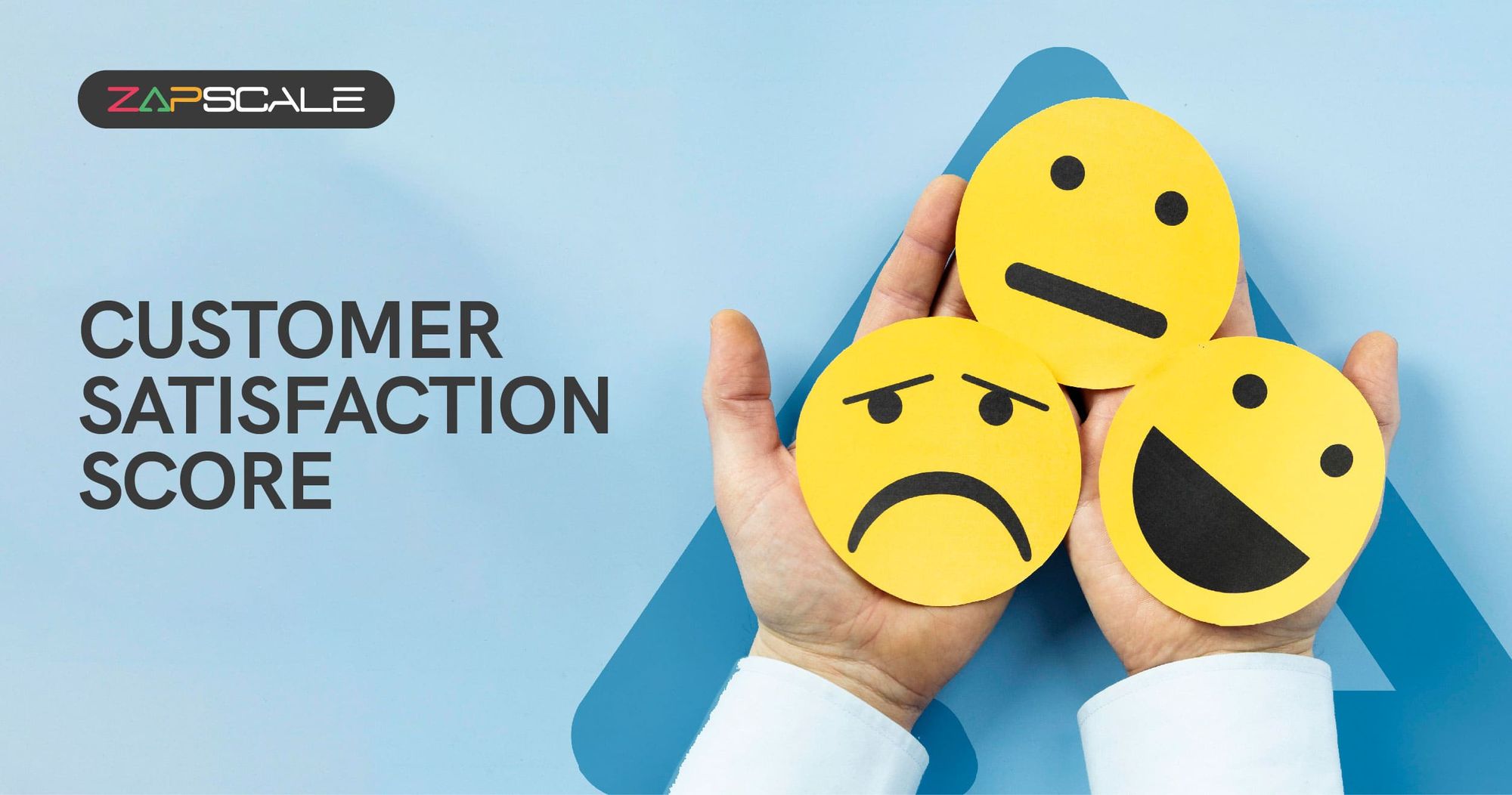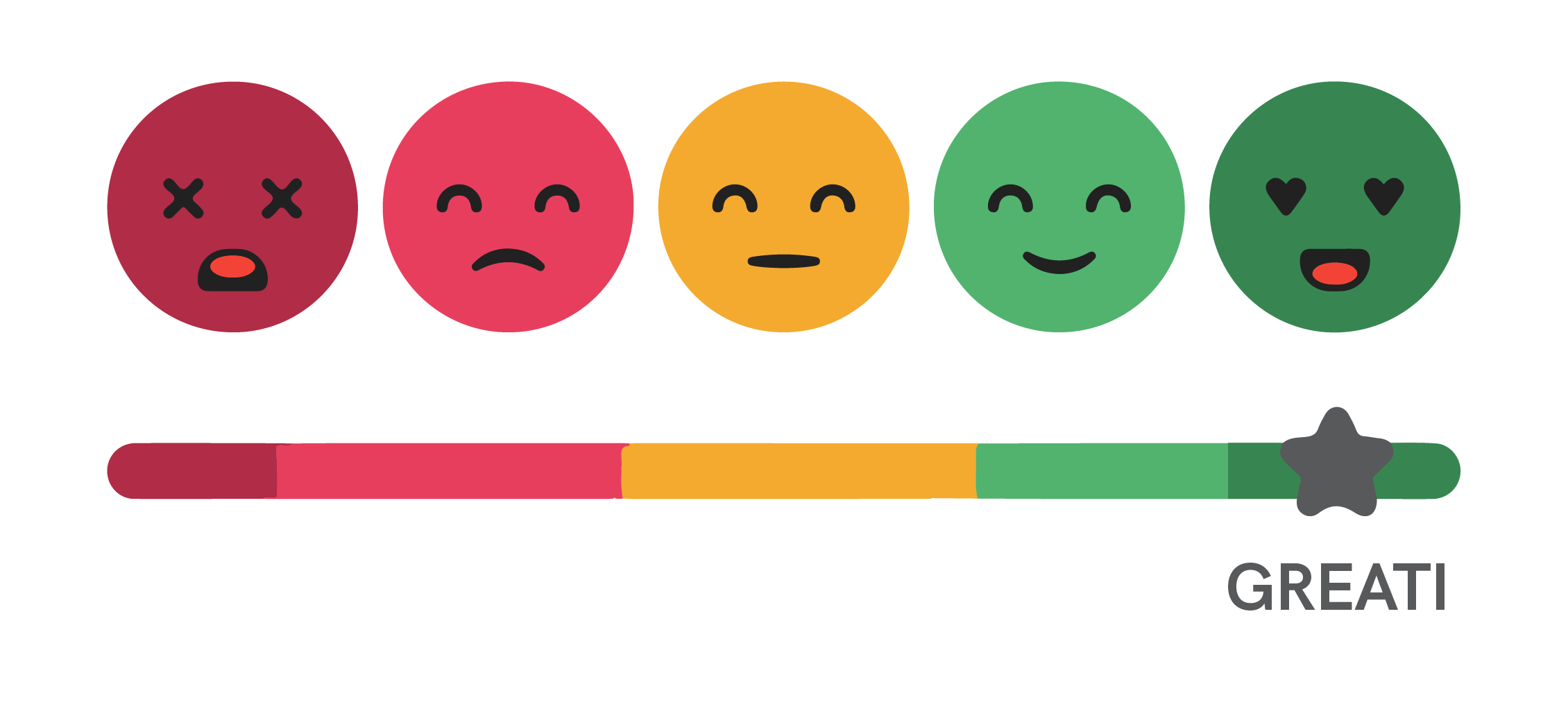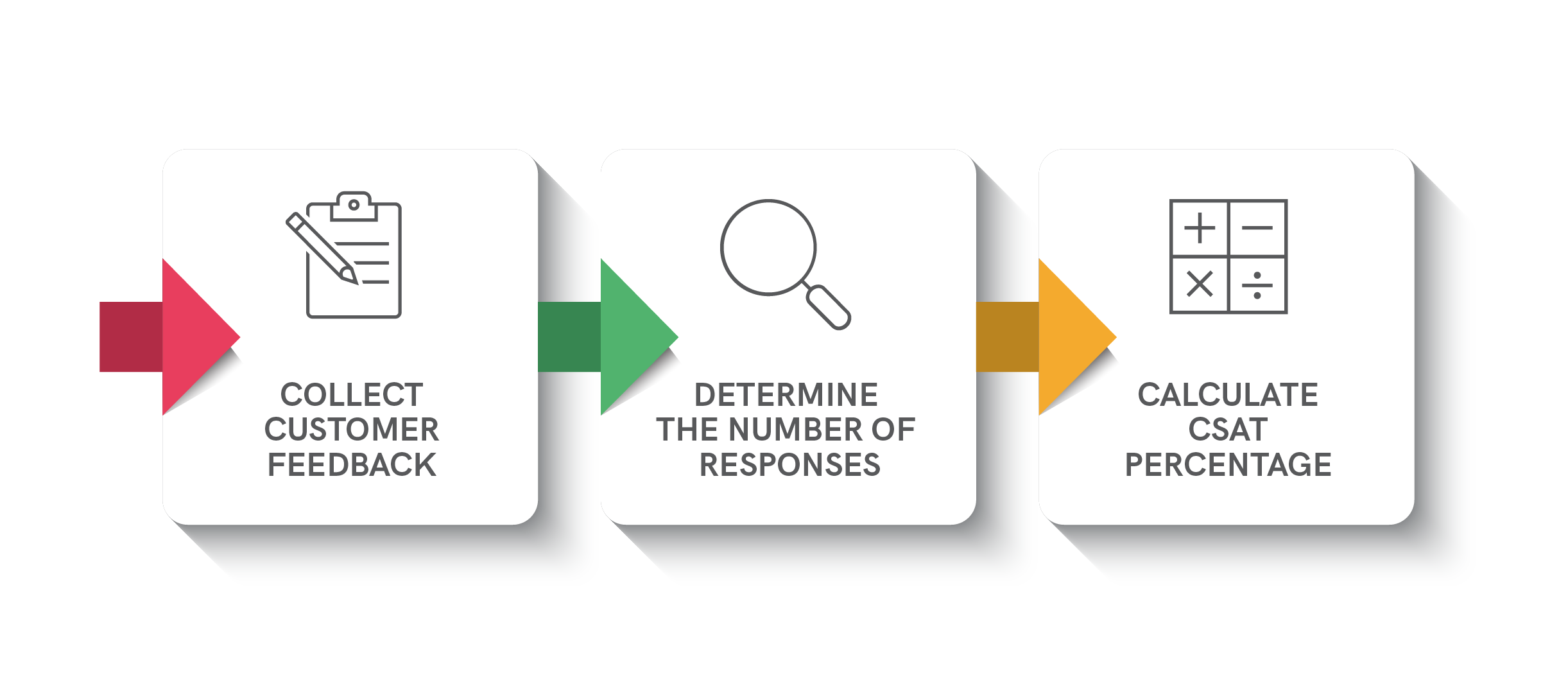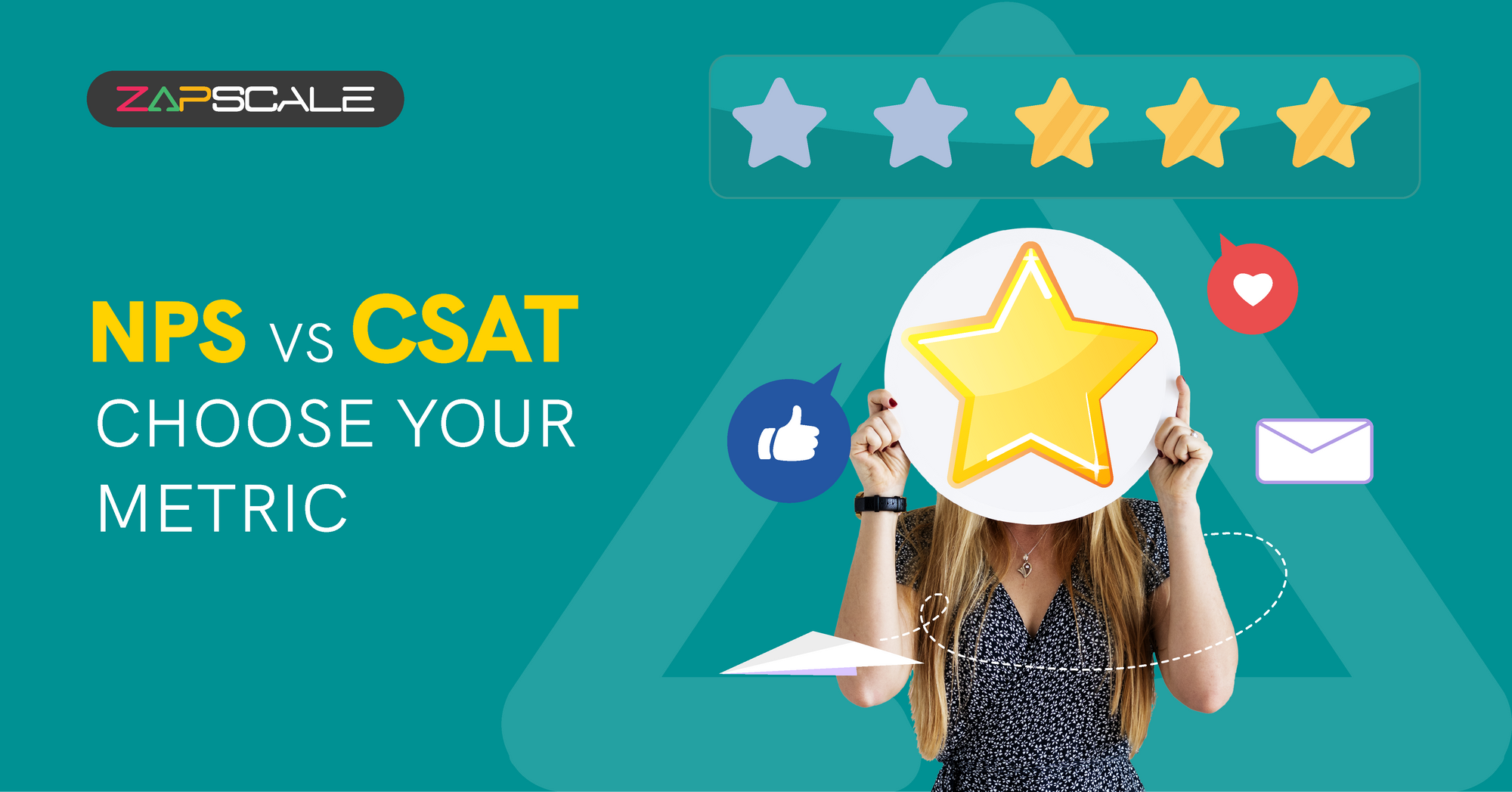CATEGORY > Customer Satisfaction
A Comprehensive Guide To Measuring Customer Satisfaction Score (CSAT)

It is no doubt that ensuring customer satisfaction is paramount to achieving sustainable growth and long-term success, especially in case of a SaaS business. It's crucial to comprehend:
- What is the customer’s overall experience with your product and your business
- Are they satisfied with your product? and
- Are they getting the desired value from your product?
To effectively gauge customer satisfaction and become a more customer-centric business, you must collect and utilize CSAT data as it will provide you with qualitative and quantitative data for future improvements. In this article, I’m going to talk about:
2. Benefits of Measuring Customer Satisfaction
3. What makes a good CSAT score?
4. How to calculate the CSAT score?
5. What are the factors that influence CSAT?
6. CSAT Scores by Industry
7. The Role of Employee Satisfaction in Customer Satisfaction
8. CSAT for SaaS Companies: Pros and Cons
9. Differences between Customer Satisfaction (CSAT) and Net Promoter Score (NPS)
What is a CSAT (Customer Satisfaction) Score?
Customer Satisfaction (CSAT) is a critical metric utilized by businesses to assess the level of satisfaction their customers have with a specific product and/or service. It serves as a quantifiable measure of the extent to which a customer's expectations have been met or exceeded. Typically, CSAT surveys ask customers to rate their satisfaction on a scale that ranges from 1 to 5 or 1 to 10.

Benefits of Measuring Customer Satisfaction
CSAT plays a pivotal role in understanding customer sentiment and pinpointing any areas for improvement. It provides crucial insights into how your product, processes, or communication makes your customers feel, which can be used to enhance the customer experience, ultimately foster brand loyalty, and generate positive word-of-mouth.
Here are the benefits of measuring customer retention:
1. Early identification of customer pain points
Happy customers become loyal brand advocates in a long run while frustrated ones silently churn or worse, badmouth your product. Surveys like CSAT, NPS and CES help you identify both - areas where you shine and features causing friction.
2. Better Customer Retention
There’s no doubt that retaining existing customers is far more effective than acquiring new ones. By understanding what keeps users happy, you can focus on improvements that directly translate to lower churn and a more predictable revenue stream.

3. Data driven insights for better products
Customer feedback is a goldmine of insights. Use satisfaction data to prioritize product development, ensuring you're building features that truly meet user needs and not just following fleeting trends.
4. Stay ahead of the curve
The SaaS industry is constantly evolving. Measuring satisfaction helps you identify competitor strengths and user demands before they become major threats.
What makes a good Customer Satisfaction score?
A "good" CSAT score can vary based on various industry benchmarks and customer expectations. While there isn't a universal standard for what qualifies as a good score, a CSAT rating above 75% is generally considered desirable, indicating a high level of customer satisfaction. However, gaining meaningful insights can be better achieved by comparing your scores against those of your peers and competitors.
How to calculate the Customer Satisfaction (CSAT) score?
Calculating the CSAT percentage involves 3 major steps:

1. Collecting Customer Feedback
To begin, you must gather customer feedback through customer satisfaction surveys. This can be accomplished through various channels, such as online surveys, email questionnaires, or face-to-face interviews.
2. Determining The Number of Responses
After collecting all the responses, calculate the total number of respondents who answered the CSAT survey question. This figure serves as the denominator in the CSAT calculation.
3. Calculating CSAT Percentage
Use the following formula to compute the CSAT percentage:
The CSAT formula provides organizations with a standardized approach to measuring customer satisfaction consistently over time. It helps to numerically represent customer satisfaction, facilitating easy analysis and comparison. When assessing CSAT scores, it's crucial to consider industry benchmarks and standards. Comparing your scores with those of competitors or industry leaders can provide valuable insights into your performance and help establish realistic improvements in your developmental efforts, product roadmap, customer success strategy, and communication.
What are the factors influencing CSAT?
Several factors can influence CSAT scores. Understanding these factors enables you to refine your efforts to enhance customer satisfaction. Some common factors include:
1. Your Product Performance
For any SaaS business, the core offering is the product itself. When customers buy your product, they expect it to deliver the desired value and provide them with a good experience. It is crucial to watch for trends like the overall product usage time, the number of features used, and the number of bugs logged to analyze the level of dissatisfaction while using the product.
2. Ease of Use and User Experience
A user-friendly interface must always be the top priority for the product team. If the product is easy to navigate, has an intuitive design, and doesn’t require a tremendous amount of technical expertise - the customer will more likely be satisfied.
3. Customer Onboarding and Training
After a sale is closed, customer onboarding is the first major interaction that your team has with the customer. It is imperative to provide comprehensive onboarding and training resources that help customers get the most out of your product. A crucial point of focus here would be to make sure that you do not overburden the customer with too much information, a smooth transition into using the product is necessary to leave a positive impression on the customer.
4. Proactive Customer Engagement
Building strong and positive relationships is one of the key aspects of a good customer retention strategy. It is important to track customer signals from all key customer touchpoints to have a comprehensive view of customer behavior. Analyzing customer data and proactively reaching out to them with the required assistance and personalized communication can help significantly improve the overall experience and make the customer feel valued.
Other factors such as transparency, data security, and compliance issues might also play a role in impacting customer satisfaction.
CSAT Scores by Industry
According to the HubSpot article, the American Customer Satisfaction Index (ACSI) publishes industry benchmarks for CSAT scores.
- Apparel: 79
- Automobiles and Light Vehicles: 78
- Banks: 78
- Breweries: 81
- Cell Phones: 79
- Computer Software: 76
- Consumer Shipping: 76
- Credit Unions: 77
- Financial Advisors: 77
- Full-Service Restaurants: 79
- Hotels: 73
- Internet Retail: 78
- Internet Travel Services: 74
- Life Insurance: 78
- Specialty Retail Stores: 77
The Role of Employee Satisfaction in Customer Satisfaction
Employee satisfaction also plays a significant role in influencing customer satisfaction. Satisfied employees are more likely to provide better customer service, leading to higher CSAT scores. Organizations must invest in employee well-being and training to ensure a positive impact on both employee and customer satisfaction.
CSAT for SaaS Companies: Pros and Cons
Pros:
- Simple and Easy to Use: CSAT surveys are quick and straightforward, with minimal effort required from both customers and the company. This leads to higher response rates compared to more complex surveys.
- Actionable Insights: CSAT results pinpoint specific areas of satisfaction or dissatisfaction. This allows you to identify pain points and areas for improvement quickly.
- Tracks Trends Over Time: Regular CSAT surveys help you monitor customer sentiment over time, allowing you to track the effectiveness of implemented changes.
- Flexible and Customizable: You can tailor CSAT questions to specific interactions (e.g., onboarding, support experience) for a more nuanced understanding.
Cons:
- Limited Scope: CSAT only captures a snapshot of customer satisfaction at a specific moment and doesn't delve into the "why" behind the score.
- Susceptible to Bias: Positive recent experiences can skew results upwards, while a single negative interaction might lead to a lower score.
- Not Predictive of Loyalty: A high CSAT score doesn't necessarily translate to customer loyalty. Customers might be satisfied with the current interaction but not passionate promoters of your product.
CSAT is a valuable tool for SaaS companies, but it's best used in conjunction with other customer satisfaction metrics like Net Promoter Score (NPS) and churn rate. This provides a more complete picture of customer sentiment and loyalty.
Difference between Customer Satisfaction Score (CSAT) and Net Promoter Score (NPS)
Net Promoter Score (NPS) and Customer Satisfaction Score (CSAT) are two commonly used metrics in analyzing customer satisfaction, but each has its own focus. NPS largely measures customer loyalty and customer’s willingness to recommend a company’s products and/or services to others. Typically, it asks customers to rate on a scale of 0-10 on the likeliness of recommending the company. NPS segments customers into Promotors (generally score 9-10), Passives (generally score 7-8), and Detractors (generally score 0-6). The key difference is that NPS gauges advocacy rather than overall customer satisfaction.
Whereas, CSAT directly assesses customer satisfaction by asking the customers to rate their experience on a scale.
When combined with the Customer Effort Score (CES), which measures how easily the customers are able to achieve their goals when interacting with a company, you can create a powerful toolkit for understanding and improving customer satisfaction.
- CES will pinpoint issues in the customer journey, telling you what you need to improve to reduce customer effort
- NPS will help you gauge the overall customer loyalty and advocacy, and
- CSAT will help you assess the customer satisfaction data on a more granular level, helping you identify the key areas of improvement in your product and/or service.
Conclusion
The CSAT score is an effective tool to measure and improve customer satisfaction. By comprehending what CSAT is, how to calculate the CSAT percentage using the CSAT formula, the factors influencing CSAT scores, and how to combine it with NPS and CES, you can gain access to invaluable customer data.
Consistently monitoring and analyzing these metrics, coupled with a commitment to employee satisfaction and a multichannel approach, will empower businesses to cultivate stronger customer relationships and pave the way for sustained organic growth.
Frequently Asked Questions
Q: How often should I send CSAT surveys?
The ideal frequency depends on the nature of your interactions and the length of your customer lifecycle. For short interactions (e.g., support tickets), weekly or bi-weekly surveys might be appropriate. For longer engagements (e.g., quarterly billing cycles), monthly surveys might suffice.
Q: What's the best way to ask CSAT questions?
Keep it short, sweet, and specific! Use a single, clear question that directly relates to the interaction being measured. Common formats include: "How satisfied were you with...?" or "On a scale of 1-5, how likely are you to recommend...?"
Q: What if my CSAT score is low?
Don't panic! A low score is an opportunity to identify areas for improvement. Analyze the feedback and reach out to unhappy customers to understand their concerns.
Q: Is CSAT the only metric I need to track customer satisfaction?
No! While CSAT offers valuable insights, it's just one piece of the puzzle. Combine CSAT with other metrics like Net Promoter Score (NPS) and customer churn rate to gain a more comprehensive understanding of customer loyalty and retention.
ABOUT THE AUTHOR
Popular from Customer Satisfaction
Quality Content,
Straight To Your Inbox!
Subscribe for the latest blogs, podcasts, webinars, and events!

Write a Blog
If you have experience in CS and
a flair for writing, we’d love to
feature you.
Write to us on
hello@zapscale.com






